Mercedes is no stranger to adulation for any car bearing the initials ‘SL’, but adding a ‘K’ to the end of this revered badge wowed the world at its launch in 1996. There were queues to see the production version at the Paris Motor Show unveiling and lines of eager buyers at every Merc dealership caused a lengthy waiting list and resulting delay in sales in the US for 12 months.
In the build-up to its launch, the German car maker had milked its impending arrival for all it was worth. At the 1994 Turin motor show, a cool looking concept was shown – but at that stage there was no clue that a folding metal roof was part of the package. Then, at that year’s Paris motor show, a second ‘SLK II’ concept set tongues wagging as the roof was shown for the first time.

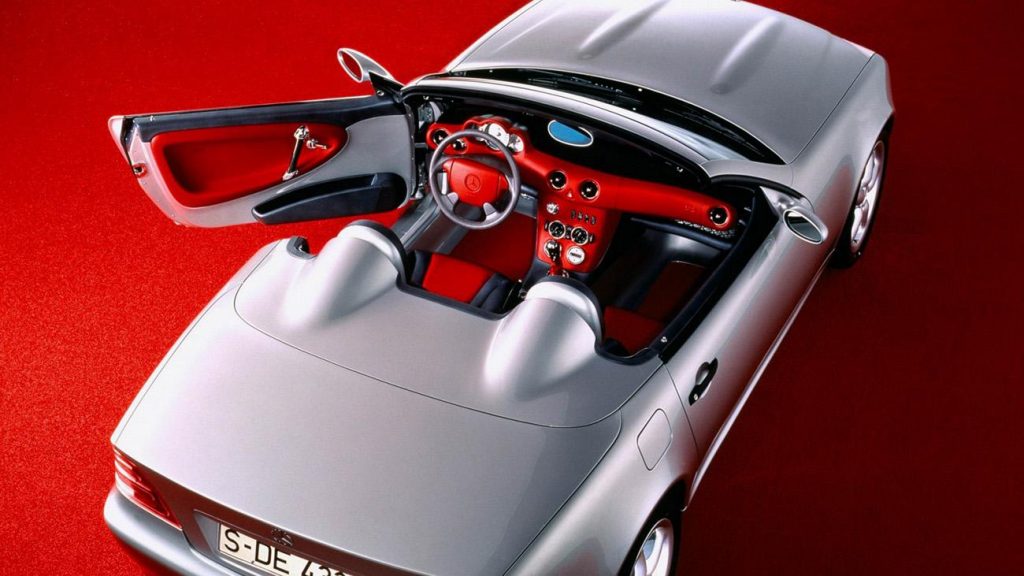
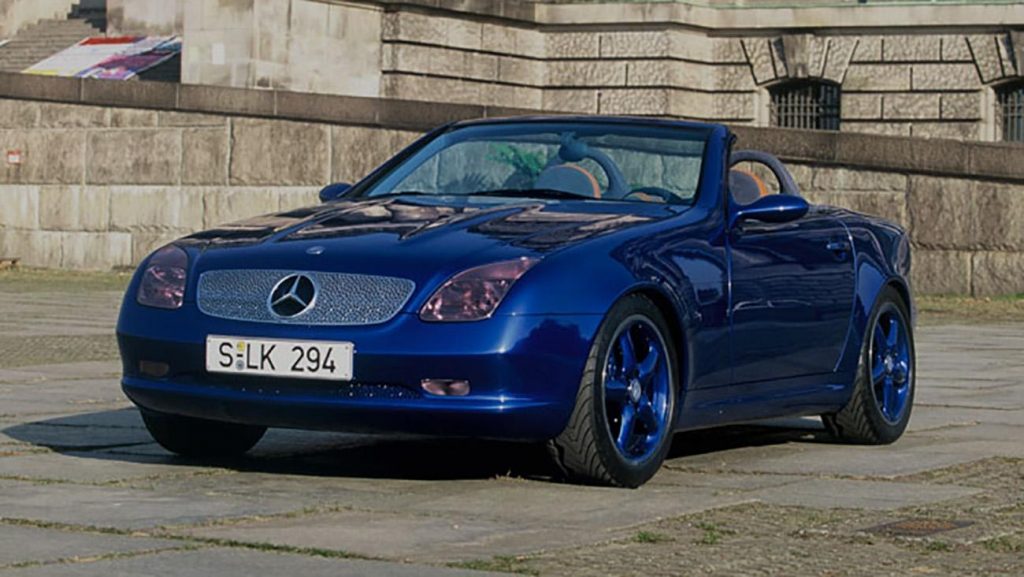
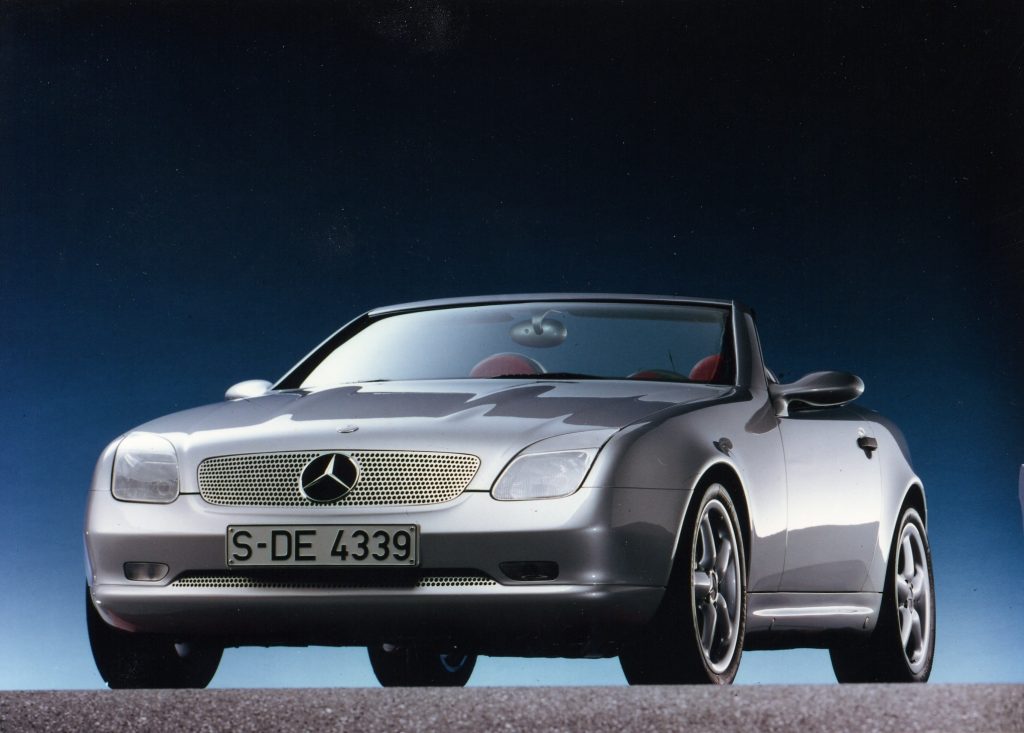
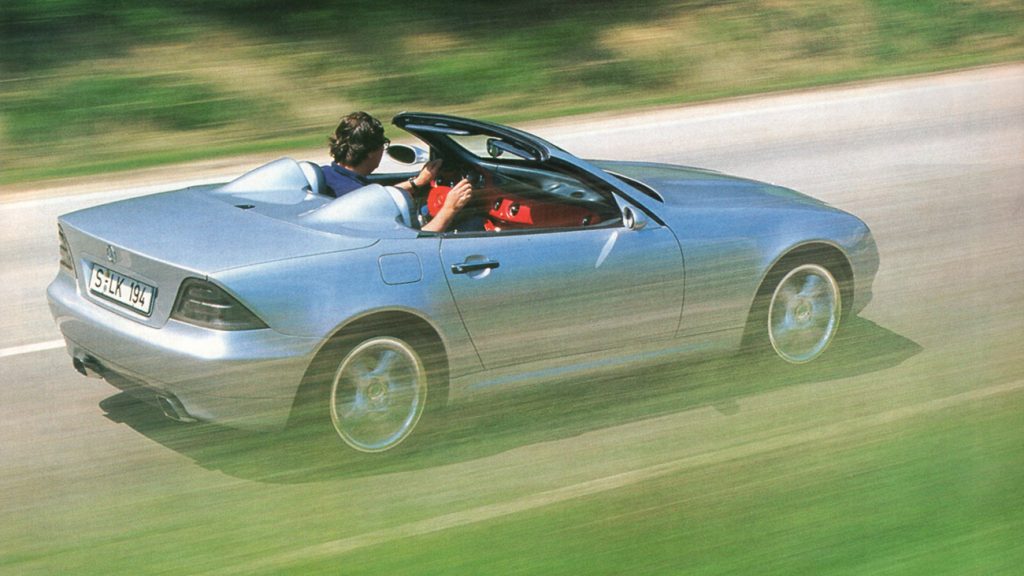
It didn’t take long for this first R170 SLK to become a common sight on our roads alongside the Porsche Boxster and BMW Z3 that were its natural competitors. Yet now, the first SLK has become a sight to savour when you do spot one, which tells us it’s at that turning point between older used car and emerging classic.
When the SLK started to roll off the production line in Bremen, Germany, it was offered in only one version for the UK to begin with. This was the 230K. In SLK, the ‘K’ stood for kurz, which is German for short as the car was a more compact member of the SL roadster family. With 230K, that same letter denoted kompressor as the 2.3-litre four-cylinder motor used a supercharger to produce 191bhp, putting it on a par with the BMW Z3 2.8 and a little way behind Porsche’s 2.5-litre flat-six in the Boxster.
Few buyers worried about the power or performance. The SLK 230K could cover 0-62mph in 7.6 seconds, which was brisk enough for the time, while 143mph flat out wouldn’t embarrass you on the autobahn. What those buyers were more interested in was the SLK’s party trick – the Vario-Roof.
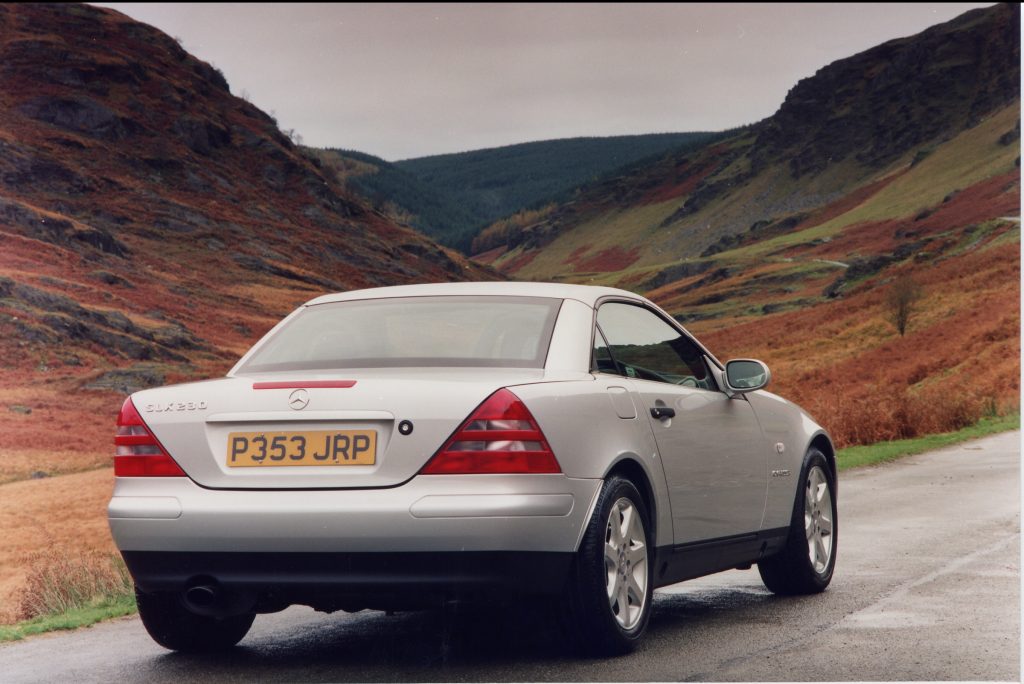
The Vario-Roof is what set this small Mercedes roadster apart from all of its rivals. It was unlike anything drivers – and intrigued bystanders – had seen, at least it was unless they’d been lucky enough to happen upon a 1935 Peugeot 402BL Éclipse Décapotable. And it was the first time Mercedes had employed such a roof.
At the touch of a button placed between the seats and shaped like the roof itself, the two-part steel Vario-Roof would scissor its way under the boot lid, which performed its own tilting act. After 25 seconds, you could enjoy the fresh air or, in reverse, be sat in a snug coupé-like cabin with less wind noise than in a soft-top convertible. Even if the Boxster’s roof could be raised or lowered in half the time, the drama and effectiveness of the SLK’s folding top made it worthwhile. With the roof up, there was even 348-litres of luggage space, about the same as a Volkswagen Golf of the time, though that shrank to 148-litres when the roof occupied most of the boot.
The Vario-Roof was not the only first for its maker. With this SLK, Mercedes did not provide a spare wheel, supplying a can of tyre sealant instead that took up much less valuable boot space. Elsewhere, the front bulkhead was designed to work as part of the crumple zone in the event of a collision, and the roadster was also the first Merc to be offered with two-tone upholstery from the standard options list.
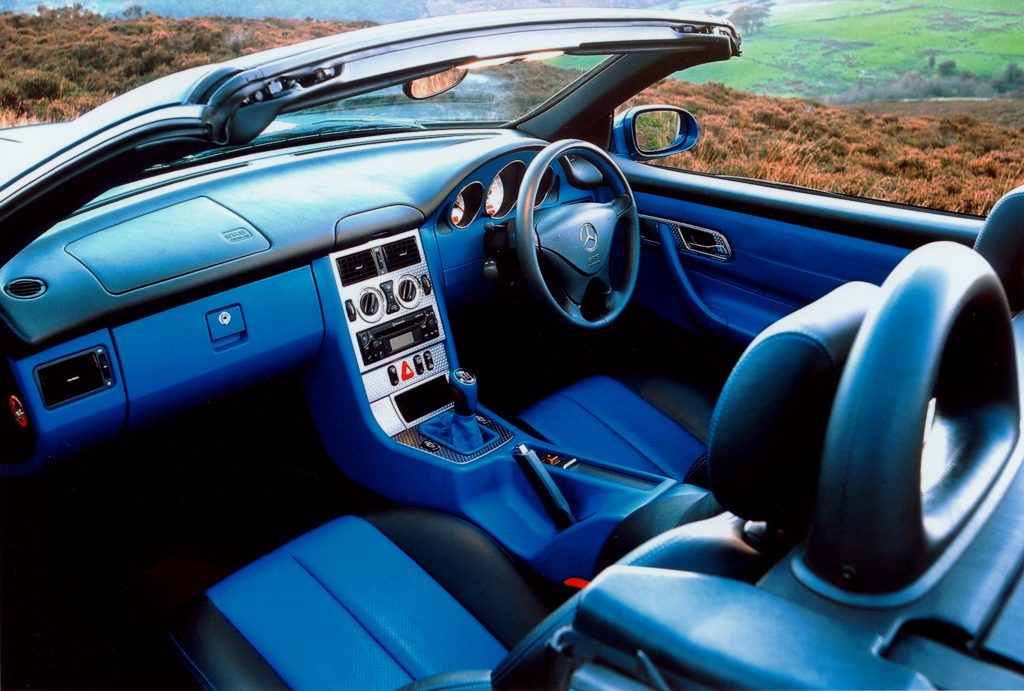
It added up to a car with considerable appeal, but after four years Mercedes knew the SLK needed a boost. This came in the form of a mild facelift, with reshaped bumpers, a six-speed manual gearbox in place of the clunky earlier manual, reshaped seats for better comfort, and cruise control with Speedtronic distance control. Mercedes also added ESP traction control as standard to all SLKs from this point on in 2000.
The SLK 230K was joined in the UK by a 200K with 161bhp that delivered 0-62mph in 8.2 seconds, while the 3.2 V6 offered a step-up with its 215bhp that gave 0-62mph in 6.9 seconds and 149mph. However, it wasn’t until November 2000 that SLK buyers finally had a car to challenge the Porsche Boxster S when the SLK 32 AMG was introduced. Like the smaller engines, it used supercharging to release 349bhp from its M112 V6 engine. It was good for 0-62mph in 5.2 seconds and an electronically limited 155mph top speed.
Even if the AMG version wasn’t as agile or fun to drive as its Porsche rival, it had a subtle glamour that makes it the peak of R170 SLKs. For most buyers, however, the 230K remains the sweet spot just as it did when the car was new. The 230K accounts for 113,520 of all 311,222 R170s built, making it the most numerous too.
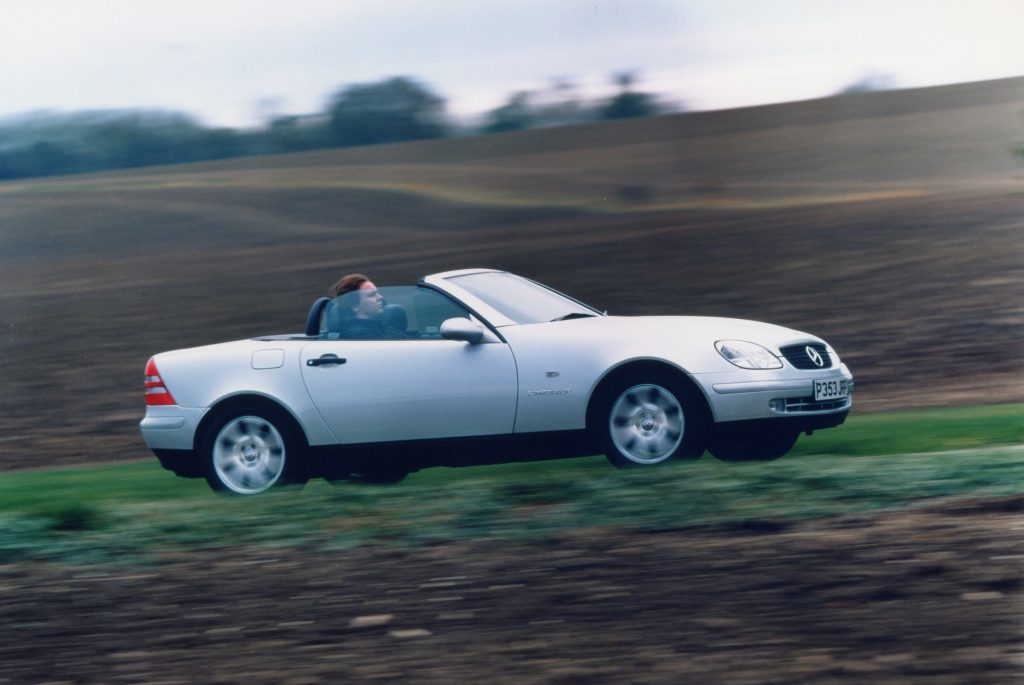
Clearly, then, the SLK is no rarity. But for those after a roadster than gives off a quality-car feel for runaround money, it makes a strong case for itself. You can pick up early, high-mileage cars from just £1500, while the very best of the best will be around £10,000. In between there is something to suit most budgets and tastes. And although some armchair critics may be quick to point out that reviewers rarely praised it for its driving experience, plenty of people are happy with a cruiser, something to bring out when the sun shines and a day at the seaside calls.
When checking any R170, rust is the first thing to look for around the wheelarches, along the sills, and around the roof panels. Corrosion is rarely structural, but it does detract from the SLK’s classy looks. Make sure the roof operates smoothly – most issues are down to failed microswitches that are easy to replace. Broken wiper linkages are trickier to repair, so be sure they sweep freely.
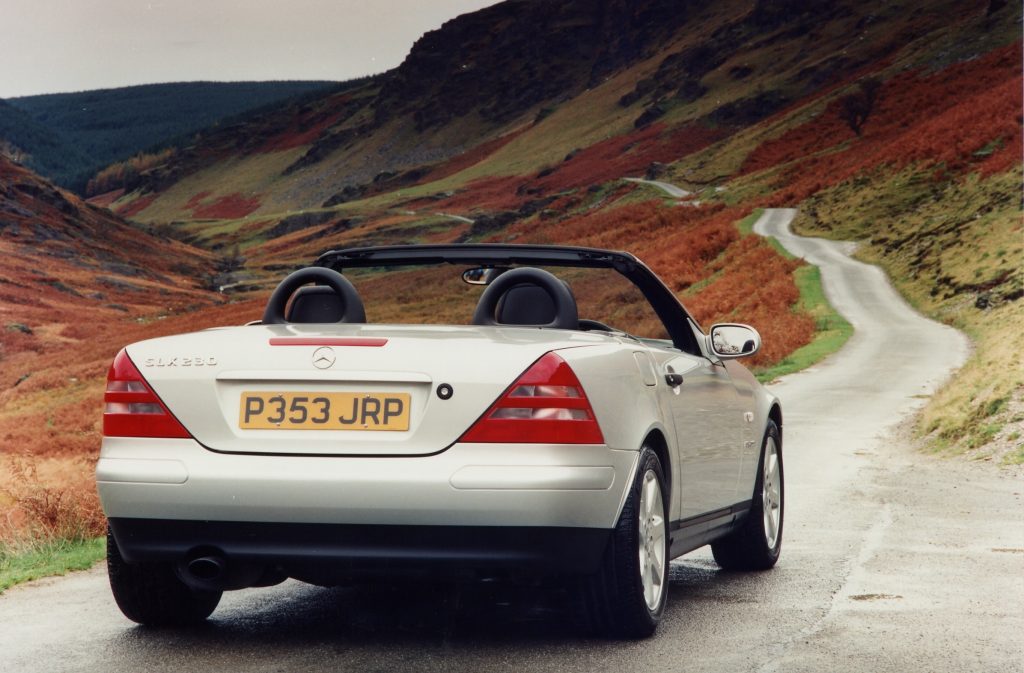
All of the engines are tough, but the wiring loom can become brittle with age and when oil leaks onto and into it. Most of the mechanical bits are common to the C-Class of the period, so are cheap to replace if anything is crusty or worn. Inside, the centre console can wear and look scruffy, you’ll find that with any car that’s lead a full and active life at the hands of multiple owners.
All of this makes looking after an R170 SLK easy on the wallet and it remains a stylish way to enjoy a roadster. With values currently still at the bottom of the depreciation curve, now is the time to bag this convertible Mercedes.
Read more
Future Classic: Range Rover Evoque
Boxster at 25: Driving the car that saved Porsche
8 of the best-handling front-wheel drive classics








